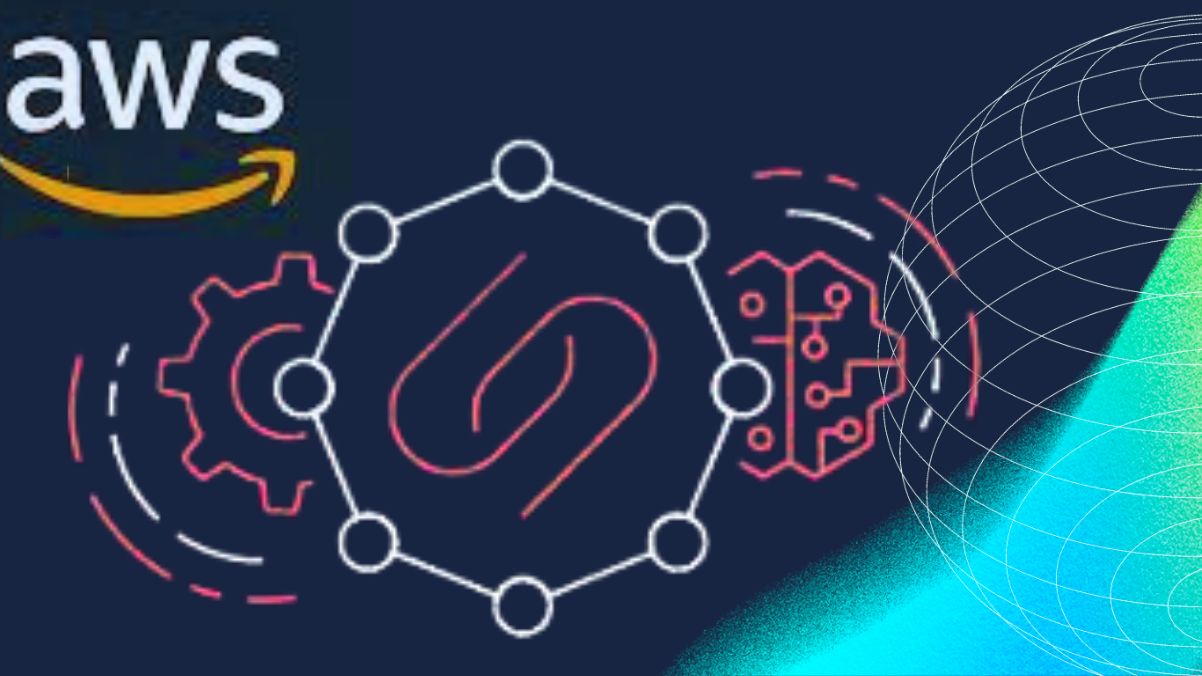Amazon Web Services (AWS) has unveiled the general availability of AWS AppFabric, a no-code service designed to enhance existing software as a service (SaaS) applications. This service aims to improve security, management, and productivity by allowing IT and security teams to easily manage and secure applications, while employees can benefit from generative AI.
With just a few clicks in the AWS Management Console, IT and security teams can leverage AppFabric to add new capabilities that enhance the performance of their SaaS applications and productivity suites. The service aggregates and normalizes log data from various apps such as Asana, Slack, and Zoom, as well as productivity suites like Microsoft 365 and Google Workspace. This aggregation increases application observability and reduces operational costs associated with building and maintaining point-to-point integrations.
In addition to its current features, AWS also announced a generative AI feature powered by Amazon Bedrock. This upcoming feature will utilize large language models (LLMs) and content from multiple SaaS applications to automatically generate insights, execute tasks, and provide suggestions across applications, returning results within the user’s preferred application.
AppFabric supports a range of independently developed applications, including Asana, Google Workspace, Microsoft 365, Okta, Slack, Splunk, and Zoom. Notable customers such as Bank Leumi, Optibus, and YuJa have already embraced AppFabric.
The aim of AppFabric is to address the challenges of integrating and managing multiple SaaS applications within organizations. Currently, these applications often lack interoperability and have distinct controls, logs, and interfaces, leading to inefficiencies and security risks. AppFabric streamlines the integration and management process, providing standardized security and operational data for each connected app. It also improves security by connecting SaaS applications to security tools and aggregating and normalizing security data using the Open Cybersecurity Schema Framework (OCSF).
AppFabric is generally available in select AWS regions, with availability in additional regions coming soon. The service will soon include generative AI capabilities, allowing users to complete various tasks across applications seamlessly.
AWS AppFabric empowers organizations to enhance the performance and security of their SaaS applications, reduce operational costs, and improve employee productivity.
What is AWS AppFabric ?
AWS AppFabric is a fully managed service that aggregates and normalizes security data across SaaS applications to improve observability and help reduce operational effort and cost with no integration work necessary.
What is AppFabric used for ?AppFabric is a set of technologies that make it easier to build, scale, and manage web and composite applications that run on Windows Server.
Can I use AWS AppFabric to deploy applications on my own infrastructure?
No, you cannot use AWS AppFabric to deploy applications on your own infrastructure. AWS AppFabric is a fully managed service that runs on Amazon Web Services (AWS). It is not possible to deploy it on your own infrastructure.
If you want to deploy applications on your own infrastructure, you can use a different platform, such as Microsoft Azure AppFabric or Google App Engine. These platforms are also fully managed, but they run on different cloud providers.
You can also deploy applications on your own infrastructure using a traditional web server, such as Apache Tomcat or Nginx. However, this will require you to manage the server yourself, including tasks such as provisioning, patching, and scaling.What types of applications can be deployed on AWS AppFabric?
AWS AppFabric can be deployed on SaaS applications.
What deployment models does AWS AppFabric support?
AWS AppFabric supports a single deployment model: fully managed. This means that AWS AppFabric manages all aspects of your application’s deployment, including provisioning, patching, and scaling.
Can AWS AppFabric integrate with other AWS services?
Yes, AWS AppFabric can integrate with other AWS services. It can use the following services to send and receive data:
Amazon Simple Notification Service (SNS)
Amazon Kinesis Data Firehose
Amazon S3
Amazon CloudWatch



[…] strategically to move all on-premises Cognos Analytics activities to IBM’s hosted and managed SaaS platform as part of this endeavor. This freed Macmillan from having to host, fund, and maintain an […]
[…] order to maximize the potential of SaaS business models and achieve more seamless infrastructure management, Gruppo Maggioli started investigating cloud […]
[…] streams. Additionally, it allows cross-account connections for writing to S3 buckets in various AWS accounts and reading from an MSK cluster. The Data Firehose delivery stream retrieves data from […]
[…] companies wishing to provide their end users with a dependable and turnkey product experience, Software as a Service (SaaS) is the preferred distribution option. Of course, the framework you will use to run your SaaS […]
[…] combine active and inactive data, such as user shares, machine learning (ML) training datasets, SaaS applications, and data kept for regulatory compliance, such as financial transactions and medical records, can […]
[…] thrilled to announce that SaaS Quick Launch, a new tool in the AWS Marketplace that enables deploying SaaS products simple and […]
[…] continually evaluating the resource needs of your AWS applications and producing targeted actions that save costs and maintain the right-sized configuration of your […]